This is a feature from Issue 21 of Charitable Traveller. Click to read more from this issue.
So much more than ‘just’ a hotel, Caiman is a 204-square-mile refuge in the vast Pantanal, the world’s largest tropical wetland. The ecological refuge is home to countless wild species as well as two boutique lodges, which operate independently from each other to maximise wildlife-viewing opportunities, and combines first-class accommodation with conservation and animal husbandry. Guests can enjoy excursions in the biome – by canoe, horseback or 4×4 – and contribute directly to the conservation of jaguars, blue fronted parrots and hyacinth macaws, among many others.

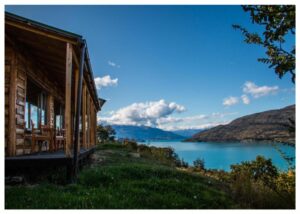
An ecolodge overlooking the striking blue waters of Lake General Carrera, Mallín Colorado Ecolodge is run by seven brothers and sisters and is surrounded by wooded trails, pristine meadow and native forest, while in the distance are Patagonia’s Northern ice fields. Around four to five hours south of Coyhaique – down Chile’s epic Route 7 – it sleeps just 32 people in four comfortable cabins and six rooms set around the main Club House. Patagonian lamb is cooked on the quincho (barbeque) and arriving here feels like you’ve reached the end of the world.
Benefiting both the local community and also the native and diverse flora and fauna, the Napo Wildlife Lodge is managed and owned by the indigenous Kickwa Añangu people, and conserves over 82 square miles of pristine Amazon rainforest within the Yasunì Nation Park. It’s part of the largest tract of rainforest in Ecuador, and visitors who book a stay in one of its red-thatched cabins can learn about the community traditions as well as explore the Añangu Lake and the Napo River, spotting caimans, turtles, piranhas and giant otters, plus over 600 species of birds.
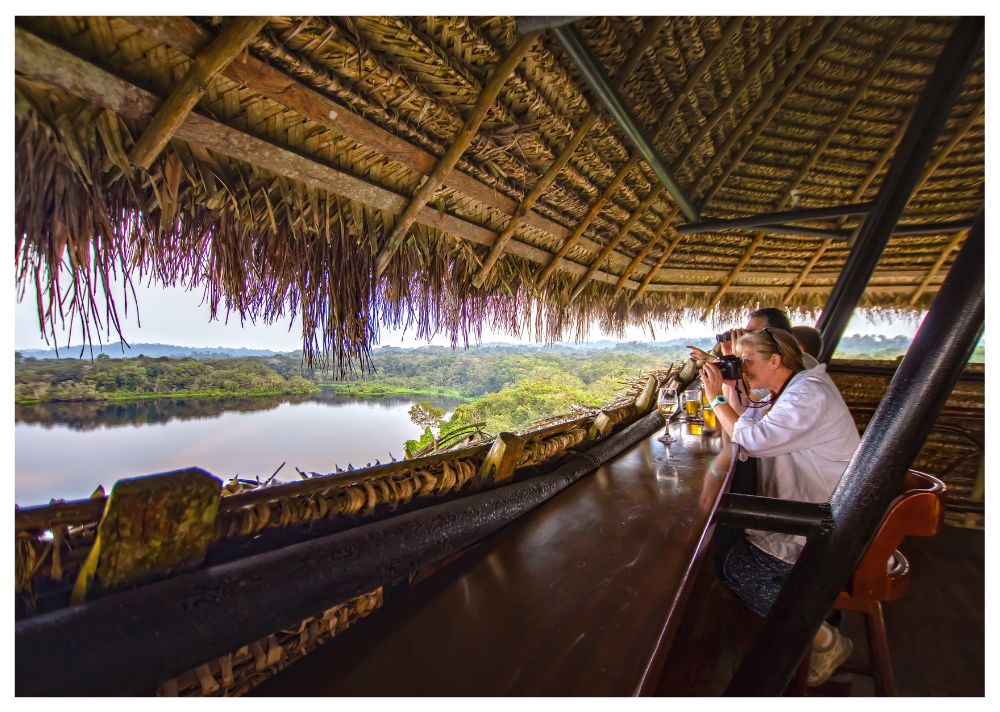
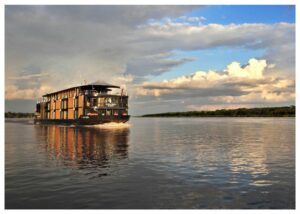
Supporting 17-20 communities a year in the Peruvian Amazon, Aqua Nera, a 205-foot river cruiser operated by Aqua Expeditions, connects its guests with nature in a remarkable yet responsible way. Actively educating guests, crew and locals on preserving the surrounding fragile ecosystem, ultra-personal excursions into the Amazon’s mystical black water lagoons and the Pacaya-Simiria National Reserve, are led by native naturalist guides while the food on board is inspired by the vivid flavours of the rainforest.
An award-winning indigenous community ecotourism enterprise in Ecuador’s Amazon rainforest, Kapawi is a tranquil retreat not far from the Peruvian border. Catering to adventurous, conscientious travellers, it’s owned and operated by the indigenous Achauar Nation and is properly remote. Featuring 10 simple but stylish bungalows set among the rainforest, they were built with recycled materials from previous structures and are designed to withstand decay in the rainforest ecosystem.
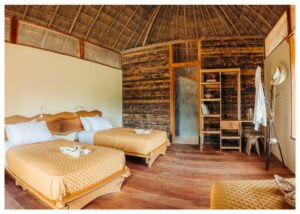

Set in the middle of the Madidi National Park in the upper Amazon’s river basin in Bolivia, the Chalalan Ecolodge is a leading light in responsible tourism and is an indigenous community committed to developing ecotourism. Using extremely knowledgeable native bilingual guides, guests get to know the rainforest’s natural history and can explore the surrounding 50km of interpretation trails, as well as Lake Chalalan – famed as the most beautiful in Bolivia – before returning to base and the lodge’s carefully crafted cabins.
Whatever you choose to do at Tierra Atacama, the local guides are exceptional. Pick from walking into the Atacama, Earth’s driest desert, or hiking through the surreal rock formations in Moon Valley, joining an excursion to the sometimes-smoking Licancabur Volcano or a horseback ride into the Rio Grande to visit small traditional villages and river gorges. The eco ethos doesn’t stop there – most of the hotel’s food is grown on site, and its daily energy demand is met by its own solar-powered hybrid system, one of the first in South America.

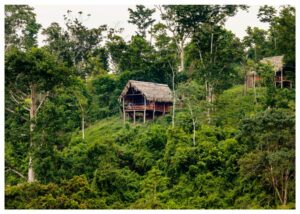
Bursting with biodiversity, the Indio Maiz Biosphere Reserve buffer zone in the south of Nicaragua is where you’ll find pumas, pacas, sloths, jaguars and hundreds of birds, and is where the Guacimo Ecolodge calls home. Accessible only by the San Juan River and with just six bungalows running solely on renewable energy, it’s the very opposite of mass tourism. Working with a team of local biologists to monitor the local flora and fauna, Guacimo Ecolodge provides guests with an insight into one of the best protected lowland tropical rainforests in Central America.
Just 50km from Rio de Janeiro is Sinal do Vale, an education centre and retreat of eight houses sleeping up to 50, sat in Brazil’s lush Atlantic Rainforest. On its doorstep is one of the world’s most diverse and threatened biomes and Sinal has achieved tangible social and environmental change since it was founded in 2012 by Thais Corral, a renowned social innovator. For example, Sinal develops ecological food systems and eco-building techniques in its organic gardens and bio-construction projects, then shares its innovations with the local and international community.

This is a feature from Issue 21 of Charitable Traveller.



Fundraising Futures Community Interest Company, Contingent Works, Broadway Buildings,
Elmfield Road, Bromley, Kent,
BR1 1LW. England
Putting our profit to work supporting the work of charitable causes











For the latest travel advice, including security, local laws and passports, visit the Foreign & Commonwealth Office website.
© 2024 All rights reserved
Made with 
| Cookie | Duration | Description |
|---|---|---|
| AWSELB | session | Associated with Amazon Web Services and created by Elastic Load Balancing, AWSELB cookie is used to manage sticky sessions across production servers. |
| cookielawinfo-checkbox-advertisement | 1 year | Set by the GDPR Cookie Consent plugin, this cookie is used to record the user consent for the cookies in the "Advertisement" category . |
| cookielawinfo-checkbox-analytics | 11 months | This cookie is set by GDPR Cookie Consent plugin. The cookie is used to store the user consent for the cookies in the category "Analytics". |
| cookielawinfo-checkbox-functional | 11 months | The cookie is set by GDPR cookie consent to record the user consent for the cookies in the category "Functional". |
| cookielawinfo-checkbox-necessary | 11 months | This cookie is set by GDPR Cookie Consent plugin. The cookies is used to store the user consent for the cookies in the category "Necessary". |
| cookielawinfo-checkbox-others | 11 months | This cookie is set by GDPR Cookie Consent plugin. The cookie is used to store the user consent for the cookies in the category "Other. |
| cookielawinfo-checkbox-performance | 11 months | This cookie is set by GDPR Cookie Consent plugin. The cookie is used to store the user consent for the cookies in the category "Performance". |
| elementor | never | This cookie is used by the website's WordPress theme. It allows the website owner to implement or change the website's content in real-time. |
| JSESSIONID | session | Used by sites written in JSP. General purpose platform session cookies that are used to maintain users' state across page requests. |
| viewed_cookie_policy | 11 months | The cookie is set by the GDPR Cookie Consent plugin and is used to store whether or not user has consented to the use of cookies. It does not store any personal data. |
| Cookie | Duration | Description |
|---|---|---|
| __lc_cid | 2 years | This is an essential cookie for the website live chat box to function properly. |
| __lc_cst | 2 years | This cookie is used for the website live chat box to function properly. |
| __oauth_redirect_detector | past | This cookie is used to recognize the visitors using live chat at different times inorder to optimize the chat-box functionality. |
| aka_debug | session | Vimeo sets this cookie which is essential for the website to play video functionality. |
| player | 1 year | Vimeo uses this cookie to save the user's preferences when playing embedded videos from Vimeo. |
| Cookie | Duration | Description |
|---|---|---|
| AWSELBCORS | 6 minutes | This cookie is used by Elastic Load Balancing from Amazon Web Services to effectively balance load on the servers. |
| Cookie | Duration | Description |
|---|---|---|
| _ga | 2 years | The _ga cookie, installed by Google Analytics, calculates visitor, session and campaign data and also keeps track of site usage for the site's analytics report. The cookie stores information anonymously and assigns a randomly generated number to recognize unique visitors. |
| _gat_gtag_UA_164521185_1 | 1 minute | This cookie is set by Google and is used to distinguish users. |
| _gid | 1 day | Installed by Google Analytics, _gid cookie stores information on how visitors use a website, while also creating an analytics report of the website's performance. Some of the data that are collected include the number of visitors, their source, and the pages they visit anonymously. |
| _hjAbsoluteSessionInProgress | 30 minutes | No description available. |
| _hjFirstSeen | 30 minutes | This is set by Hotjar to identify a new user’s first session. It stores a true/false value, indicating whether this was the first time Hotjar saw this user. It is used by Recording filters to identify new user sessions. |
| _hjid | 1 year | This is a Hotjar cookie that is set when the customer first lands on a page using the Hotjar script. |
| _hjIncludedInPageviewSample | 2 minutes | No description available. |
| CONSENT | 16 years 3 months 16 days 17 hours 23 minutes | These cookies are set via embedded youtube-videos. They register anonymous statistical data on for example how many times the video is displayed and what settings are used for playback.No sensitive data is collected unless you log in to your google account, in that case your choices are linked with your account, for example if you click “like” on a video. |
| iutk | 5 months 27 days | This cookie is used by Issuu analytic system. The cookies is used to gather information regarding visitor activity on Issuu products. |
| vuid | 2 years | Vimeo installs this cookie to collect tracking information by setting a unique ID to embed videos to the website. |
| Cookie | Duration | Description |
|---|---|---|
| IDE | 1 year 24 days | Google DoubleClick IDE cookies are used to store information about how the user uses the website to present them with relevant ads and according to the user profile. |
| mc | 1 year 1 month | Quantserve sets the mc cookie to anonymously track user behaviour on the website. |
| NID | 6 months | NID cookie, set by Google, is used for advertising purposes; to limit the number of times the user sees an ad, to mute unwanted ads, and to measure the effectiveness of ads. |
| test_cookie | 15 minutes | The test_cookie is set by doubleclick.net and is used to determine if the user's browser supports cookies. |
| VISITOR_INFO1_LIVE | 5 months 27 days | A cookie set by YouTube to measure bandwidth that determines whether the user gets the new or old player interface. |
| YSC | session | YSC cookie is set by Youtube and is used to track the views of embedded videos on Youtube pages. |